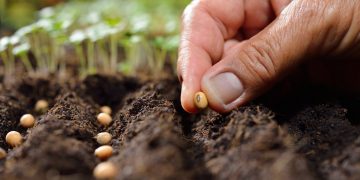Saving heirloom tomato seeds brings back those memories of science classes: beakers and safety goggles, anticipation and disgust, curiosity and pride. The seeds can’t just be scooped out and dried; they need to be removed with all the slimy tomato guts and left to ferment. The gross factor of fermenting these tiny seeds is about as fun of a science experiment as you can get, making it an ideal project to do with kids.
Now you may be asking yourself, “Why on earth do I need to ferment the tomato seeds? Can’t I just scrape them onto a paper towel and dry them?!” The answer is that fermenting the seeds is copying the natural process the tomatoes would go through to reproduce. The membrane around the seeds prevents germination and can carry disease. By fermenting it, it sterilizes the seeds and thus protects the next year’s plants. In addition, it gets them ready for winter storage so they will be primed for good germination rates when the time comes.
Choose Your Seeds
The most important part of saving heirloom seeds is selecting the best fruit to begin with. Whether you are purchasing your tomatoes or have grown your own, you should look for the best visual example of a variety: perfect color, size, and shape. Ensure there is no disease or pest damage visible, and don’t forget to taste them. Yummy tomatoes make seeds that make yummy tomatoes.
Scoop Out the Guts
Gently cut your perfect tomato into sections. Grab a spoon and scoop out the seeds and the gel-like membrane that they are surrounded by. This whole glob goes right into the Mason jar so it’s going to get a bit messy. Fill up each jar with about ¼ cup to ½ cup water, just enough to cover the goop.
Cover and Label
Write the variety name on a piece of paper towel folded square, and secure to the lid by screwing on the ring over top. This allows for air to circulate to the mixture as it ferments, but also makes sure you don’t forget the variety.
Store in a Warm Place
Now set the Mason jars someplace warm, out of direct sunlight where they won’t be disturbed for a few days. Depending on the temperature, it could take 2 days to a week so be prepared to stick around and keep an eye on them.
Check for Mold
Within a few days, the top of the liquid should have a grayish rim of scum and even later, a full cover of mold. At this point the seeds should have sunk to the bottom of the muck as well. Congratulations! This means that the fermentation process is complete. This is also great news because the jars are likely smelling quite awful by now.
Strain and Rinse
Add another ½ cup or so of water to the jars to dilute the gunk and allow the viable seeds to sink to the bottom. Gently pour off the top layer of fermenty-goodness and then strain the seed into a fine-mesh sieve.
Drying
Next, you need to dry the tomato seeds. Place the strained tomato seeds on a plate or bowl and set back in the warm dry place for a few days to dry out. Many people use paper plates, but my little glass bowls work just fine for me. Make sure that you attach or set your paper towel cover / label to the seeds – there is nothing worse than going through the process of fermenting seeds and then forgetting which variety they are!
Storing
Once your tomato seeds are dry, you can shuffle them into some handy little coin envelopes, label them up, and store in a cool dry place until next spring. You have graduated from science-class geek to a true heirloom-tomato alumnus.















